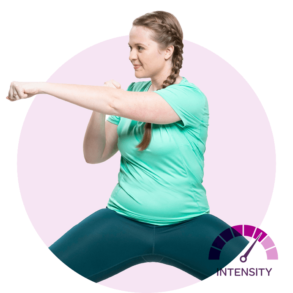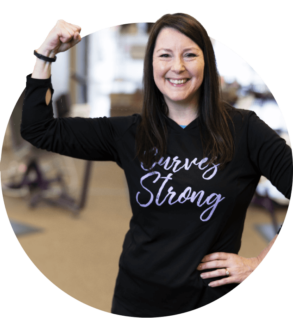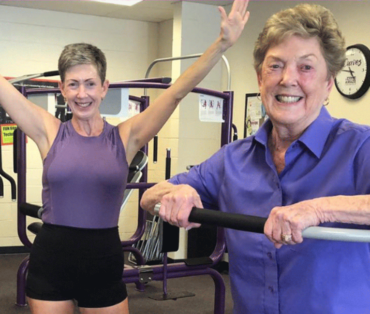Knee Pain in Ladies – How to Prevent Knee Injuries
You never appreciate how much you use your knees until one—or both—of them ails you. Women are two to eight times more likely than men to suffer from knee injuries, so it’s particularly important for us to take care of these joints. Here are some of the most common knee injuries in women, as well as some knee strengthening exercises and lifestyle advice to help prevent them.1
Women and Knee Injuries
If you’re suffering from a knee injury or have had one in the past, first, you can take comfort in knowing that you’re not alone. Knee injuries are common in women. There are a few possible reasons why women are more likely to injure their knees than men, including the following:
Estrogen: There appears to be a link between knee injuries and hormonal fluctuations. Women are more likely to suffer ACL tears right before ovulation, a time when estrogen levels are high. The exact reason why estrogen increases injury risk is not known, however.
Weight gain: The more pressure on your knees, the more vulnerable they are to injury. One of the best things you can do to ease knee pain and reduce injury risk is maintain a healthy weight by engaging in a full body workout like the Curves Circuit.2
Tendonitis: Tendonitis is inflammation of the bands of fibrous tissue (tendons) that connect your muscles to your bones. Women are more likely to develop tendonitis as they age, and the knee is one area where it can strike.3
Arthritis: Women are more likely to suffer from arthritis, or inflammation of the joints. The knee joint is commonly affected by arthritis. Contrary to what you might think, one of the best things you can do to prevent arthritis from progressing is to keep your joints moving with a regular exercise routine that includes moves that strengthen knees.4
Most Common Knee Injuries in Women
If you develop knee pain and swelling, you may have suffered one of the following injuries:
ACL tear: The anterior cruciate ligament (ACL) is one of the most severe knee injuries. It usually results from playing a sport that requires you to pivot, such as tennis or soccer, or from changing direction rapidly or landing the wrong way during a jump.
PCL injury: Injury to the posterior cruciate ligament (PCL) usually happens from a blow to the knee.
Tendon strain or tear: Knee tendon tears tend to occur in middle-aged men and women who are physically active. They can result from falling, being hit in the front of the knee, or landing awkwardly from a jump.
Torn meniscus: Meniscal tears can result from arthritis or ageing, or they can occur after twisting or pivoting during physical activity.5
How to Prevent Knee Injuries
There are some risk factors for knee injuries, like hormone shifts and natural changes in tendons and joints that occur with age, that we cannot control. But there are several, such as maintaining a healthy weight and performing knee strengthening exercises, that we can do something about. 6
Maintain a healthy weight: One of the best ways to prevent knee pain and injury is by staying at a healthy weight. A great way to control your weight and strengthen your knees at the same time is with a full body workout like the Curves Circuit.
Ease into exercise: Whether you are starting an exercise routine for the first time, or it’s been years since you’ve worked out, take it slowly. Adding too much to your full body workout too soon can add stress to your body, including your knees. At Curves, your Curves Coach can help adjust your workout to your fitness level, gradually adding more time and resistance as you get stronger.
Wear proper footwear: Since knee pain and injury are so often caused by twisting or hyperextending the knee, wearing a supportive, well-fitting athletic shoe—both during your full body workout and throughout your everyday life—can help
Warm up before exercise and cool down after, the Curves workout provides a warm-up, cool-down, and stretching: Jumping right into your workout without properly warming up can put a lot of stress on your ligaments and joints, including your knees. Stopping your full body workout abruptly without taking time to cool down can be equally as harmful.
Perform knee stretches:
Performing knee stretching exercises as you’re cooling down can help prevent knee pain and injury. Here are some good knee stretches:
- Calf stretches
- Quadriceps stretches
- Hamstring stretches
Engage in knee strengthening exercises:
In addition to knee stretches, it’s important to do knee strengthening exercises to protect your knees and strengthen them so they can support you throughout your full body workout. Good knee strengthening exercises include:
- Leg Extension / Leg Curl machine
- Calf raises on the mats
- Half squats on the squat machine
If you’ve injured your knee, take care. As you recover from a knee injury, it’s important to do your prescribed knee rehab exercises and talk to your health care provider about when it’s safe to go back to your full body workout routine. Your provider may be able to prescribe knee physical therapy exercises you can incorporate into your workout as you gradually build back up to full fitness.7
Look to Your Curves Coach
For help with these knee strengthening exercises and stretches, or for additional advice on how to exercise safely to protect your knees, turn to your Curves Coach. Your Curves Coach can help you tailor your full body workout, Curves fitness classes, or My Curves OnDemand to fit your fitness needs. She can help you with a weight loss eating plan to assist with maintaining a healthy weight, too.
To find out more about how Curves can help you prevent knee injuries, visit ‘Why Curves‘. Or, get started on your fitness journey today by talking to a Curves Coach.
Sources:
- Women’s Knee Injuries Prevention and Risks (webmd.com)
- Women’s Knee Injuries Prevention and Risks (webmd.com)
- Taming tendinitis in the knee – Harvard Health
- Arthritis Risk Factors | CDC
- Common Knee Injuries – OrthoInfo – AAOS
- Common Knee Injuries – OrthoInfo – AAOS
- Knee Conditioning Program – OrthoInfo – AAOS








